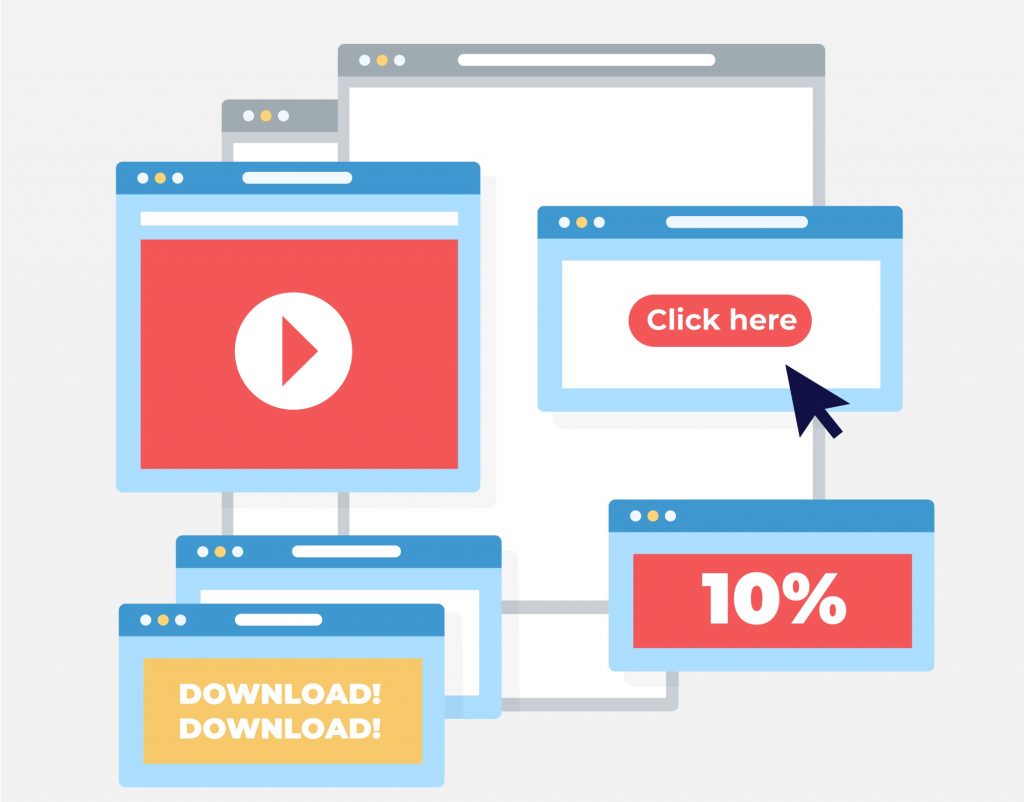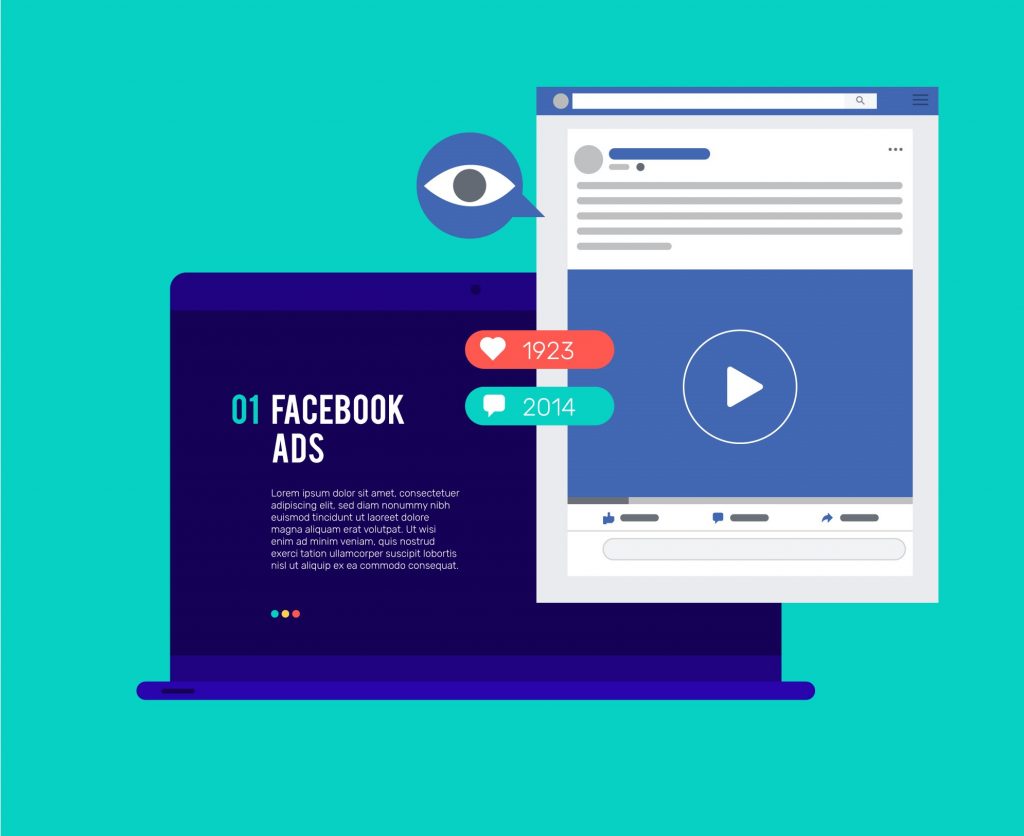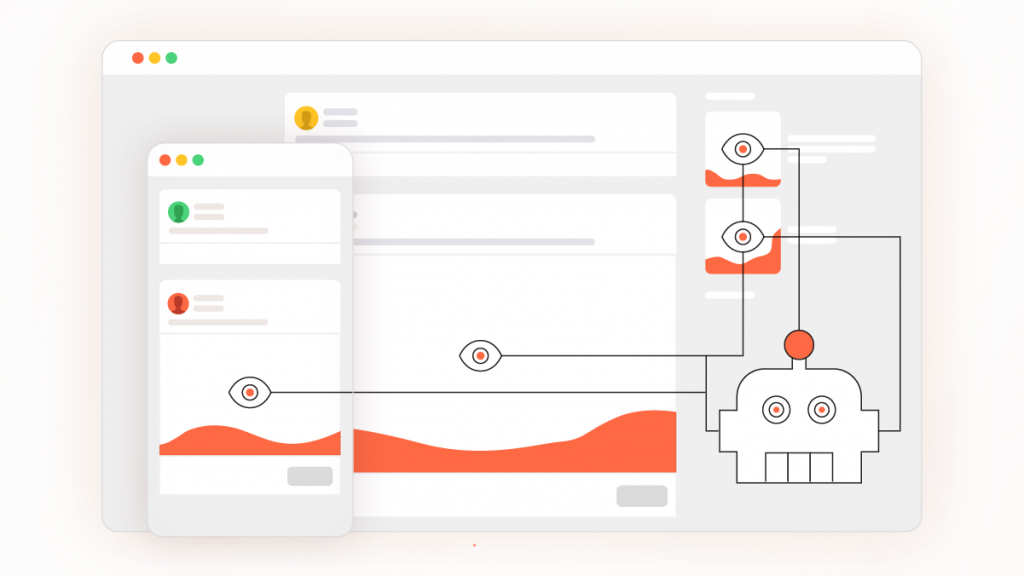Paying for ad impressions is something that digital marketers are familiar with. Most major online ad platforms use some kind of pay per view model (known as CPM – cost per mille). But do you know exactly what you’re paying for when you pay for an ad impression?
Of course, there are different definitions for impression depending on the platform you’re using. There are many ad platforms for digital marketing, but the biggest by far are Google and Facebook.
So, are Facebook ad impressions the same as Google ad impressions?
Does an ad view register if the banner image or video loads, but the user clicks away? And what about if your ad media is under the fold and the user never sees it? Does that mean you’ve paid for impressions on your campaigns even if it’s not been seen? And what about if a bot or web scraper visits a site?
Yes, there are a lot of things to bear in mind. So let’s get stuck in….
What is an ad impression?
An ad impression is any time that a video, banner, or other CPM ad is loaded or served on screen. In theory, this is on a visible part of the screen, or on a pop-up/pop-under which has been viewed.
Google’s definition of ad impressions is as follows:
“An impression is counted each time your ad is shown on a search result page or other site on the Google Network.”
Facebook defines ad impressions as:
“An impression is counted as the number of times an instance of an ad is on screen for the first time.”
Although Google and Facebook differ very slightly in their impression triggers, they are mostly the same thing.
An advertisement loads, or is served on a page, and the advertiser pays. In theory, this needs to be visible to the user for it to count, but this might not always be the case.
For Facebook video ads, they state that the video doesn’t necessarily need to play to count as an impression.
Google video ads on YouTube use an approach called TrueView, which ensures that at least some of your video is seen before registering as an impression. For example, with YouTube, advertisers can choose to ensure that the entire video is viewed before it’s skipped, or at least the first five seconds.
But of course, Google Ads can load on multiple platforms such as Maps, Shopping, YouTube, or the Display Network. Some of these platforms will register an impression, for example, Google Maps, even if the ad isn’t clicked or expanded. This is because some of the information is viewable at-a-glance and doesn’t need to be interacted with for searchers to find value.
Ad clicks vs Ad impressions

One of the tricky things about measuring or counting impressions is that you can’t be sure that the ad has even been seen. It’s easy to ignore a banner or autoplay video, but the advertiser still pays for an impression.
However, a click is a much more real and tangible thing. Someone (or something) needs to actively click on the link to register the impression.
Click based ads are referred to as CPC, cost per click.
Impression based ads are usually referred to as CPM, or cost per mille – one thousand impressions.
(Of course, there are other click formats, such as CPA – but for the sake of simplicity we’ll focus on these two).
So, theoretically, if you’re paying per click, you’re only paying for those that click on your ads. And, with impression ads, you’re paying for each time your ad loads in a visible area of a page or app.
However, it isn’t quite that simple.
The CPC model
You might assume that paying for cost-per-click ads means that your campaign will get more views than it does clicks. After all, not everyone who sees your ad will click on it.
So if you budget $100 and you’re paying $0.20 per click, you might get 500 clicks, but you might also get two or three thousand ad views.
Interestingly though it doesn’t work like this.
Facebook offers a CPC vs CPM model. But the CPC actually adapts depending on how many times your ad is displayed before it receives a click. So, if your ad needs more impressions for one click, your CPC will go up.
For Google too, the CPC model isn’t quite as simple as you might first think. The final value of your CPC also depends on factors including ad impressions, your ad quality score, the competition for clicks and more.
And, sometimes your ad will just need more impressions to get that click, or conversion.
Real vs fake impressions

The issue of impression fraud, or fake impressions, is well known, with all of the major ad platforms clamping down on invalid traffic. So, how are they doing?
Google and Facebook do have processes to prevent obvious fraud or bots from viewing or clicking your ads. They also automate refunds if a bot does register an impression.
The problem though is that invalid traffic is becoming smarter, and the ad platforms do miss significant chunks.
Impression fraud can come from a number of sources, including:
- Web scrapers
- Automated external bots
- Fake social accounts
- Falsified ad placements
- App malware
Although there has been a clampdown on much of this type of traffic, here at ClickCease we still see alarming amounts of impression fraud getting through.
For example, from our own in-house data, we see that Google Ads marketers experience an average 14% invalid traffic. Facebook Ads is better, with an average of around 4% invalid traffic being picked up outside of Facebook’s filters.
The reason ClickCease picks up more non-genuine traffic is because we use different methods to track and block fraud.
One difference is that we have a lower threshold for site visitors that bounce and VPN based traffic. We also have processes to spot bots and, with Facebook, methods to identify bad audiences.
These bad audiences are those that are most likely spam accounts, or profiles that marketers wouldn’t want to target.
And, with Instagram and Facebook found to have high percentages of fake profiles, preventing impressions from bad audiences is a big factor in managing ads on Facebook.
Other ways to generate fake impressions
Another way that publishers can generate fake ad impressions is by using some sneaky tactics. Many of these register as a view or click, as they are loaded in a viewable area. However, a the human eye either can’t or simply doesn’t see it.
Typical fraudulent impression techniques include:
- Ad stacking – Multiple ads on top of each other to collect multiple impressions payouts
- Pixel stuffing – Ads displayed in unviewable display sizes but still paying out for impressions
- Click jacking – The user’s click is hijacked to click on an ad, even if they haven’t interacted
- Background views – Where an app or software registers views on an ad, even if the app isn’t in use by the user – for example with DrainerBot
These are techniques commonly used by ad fraud focused publishers. Although most of these practices have been clamped down on in recent years, they do still happen regularly.
Staying in control of your ad impressions
Using online ad platforms does leave you open to fake clicks, especially on the big platforms such as Google and Facebook.
Facebook and Google do give some control over your ad targeting, and their protection does pick up the obvious fraud such as intentional clicks from publishers and some types of bots.
But what about these other sources of impression fraud?
Barely a month goes by without the revelation of another type of malware designed to dupe marketers out of their ad budget.
ClickCease offers a level of protection that puts you back in control of your Google and Facebook Ads. By being able to monitor the type of traffic on your ads, seeing specific details around the keywords being targeted, and the click activity on your ad, you can manage your ads much more effectively.
Read more about click fraud and ad fraud in our guide…
Block bad audiences, malware and the increasingly sophisticated botnets that are still making billions a year from ad budgets.
Sign up for a free audit with ClickCease to see how your traffic looks.
